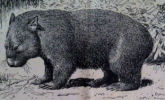 This article reproduces a leaflet written by Jim Quirk, who was my father. The leaflet advertised a 'Nature Show' at the lower Melbourne Town Hall in 1966. The Field Naturalists Club of Victoria and the Society for Growing Australian Plants sponsored the Nature Show to help the plight and status of the wombat in Australia. I wonder if the same results could be achieved today. Have we advanced at all? Reading of the particularly dire conditions for wombats in South Australia, it would seem not. And, think of the kangaroos who suffer so badly still at the wrong end of rifles and who are caught up so messily and tragically in urban development. The discursive nature of the account below may be a reflection of a time when conservation was a battle but our lives were not as stressed and rushed as they are today. We were more able to organise politically for causes in NGOs which were not then commercialised.
This article reproduces a leaflet written by Jim Quirk, who was my father. The leaflet advertised a 'Nature Show' at the lower Melbourne Town Hall in 1966. The Field Naturalists Club of Victoria and the Society for Growing Australian Plants sponsored the Nature Show to help the plight and status of the wombat in Australia. I wonder if the same results could be achieved today. Have we advanced at all? Reading of the particularly dire conditions for wombats in South Australia, it would seem not. And, think of the kangaroos who suffer so badly still at the wrong end of rifles and who are caught up so messily and tragically in urban development. The discursive nature of the account below may be a reflection of a time when conservation was a battle but our lives were not as stressed and rushed as they are today. We were more able to organise politically for causes in NGOs which were not then commercialised.
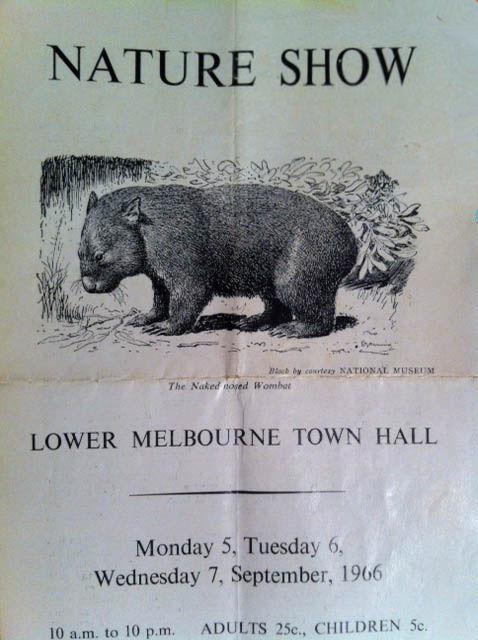
The Wombat
This animal, as all naturalists and most people in general know, is a marsupial, indigenous to Australia , including some Bass Strait islands. It is confined to Eastern and Southern Australia, including the great Australian Bight area. Fossil remains have been have been found in Western Australia, s,o apparently it inhabited that part of the continent.
Wombats are divided into five main species, although some naturalists concede only four distinct types. The most significant differences in the various species are size, fur and nose covering. The species best known to Victoria has a bare nose.,while others in Eastern Australia have hairy noses. Some have coarse hair; this applies to the Naked -nosed Wombat, while the southern , while the Southern Hairy-Nosed and Flinders Island species have soft silky fur. Size and weight for adults varies from about 2’ 6’ and fifty pounds, to 3’ 6” and eighty pounds or more. These figures apply to the small Flinders Island variety and the species familiar to Victorians respectively.
Wombats are, of course essentially nocturnal animals and as they burrow in the ground sometimes to the extent of 15 feet, are not frequently seen. They are herbivorous, feeding mainly on grass, the roots of a variety of vegetation and some fungi, almost entirely confining this activity to the hours of darkness.
These native animals are not prolific breeders, bearing only one young a year, about July. Tiny when born , the young remains with the parent for about 6 months. Wombats are credited with being the most intelligent of marsupials and the Flinders Island variety is regarded as being the most attractive of the species. It is on record that wombats have become most docile with friendly people and much liked as pets.
The wombat as with most animals and birds has suffered greatly with the advent of the white man to this country - very little is known of the hairy-nosed variety of South Queensland, and those inhabiting Southern New South Wales have been killed out over a large part of their range. By 1887, every wombat on King Island had been killed. This brings me to the “political" side of this animal, as affecting it in the State of Victoria.
Victorians have certainly been no exception to the incompatibility of native fauna and human settlement. The wombat early incurred the displeasure of settlers, when they erected fences to stop the movement of the introduced rabbit. These fences naturally came across the path of the wombat as it moved about to feed at night. Being a very strong animal and naturally adopted to burrowing and pushing obstacles aside, the wombat had no difficulty in getting through the fences . So the irony is that the introduced rabbit has indirectly been the death of probably hundreds of thousands of wombats: no rabbits, - no wire-netting fences - no holes made by wombats - and probably no entry to the Vermin List on which this otherwise harmless animal was placed by the State Government in 1906, at the behest of farming interests.
Of course human settlement would still have affected this creature as it has all forms of wild life, but possibly not as drastically, as in addition to being the only only native animal declared vermin in 1906, a bounty on its destruction was added in 1925. The operation of the Act was for municipalities to administer the bounty, but subsidised to the extent of 2/6 a “scalp” by the State Government. The subsidy was increased to 7/6 in 1949 with the local councils adding 2/6 which meant a reward of 10/- ($1.00) for each wombat killed by farmers and hunters. Municipalities concerned were mainly in northern Victoria, where the animals are most numerous.
The exact number of wombats killed in Victoria since Federation is not known, but in the past 6 years, bonuses have been paid in respect in respect to over 50,000. I consider the number slaughtered since the introduction of the bonus in 1925 must be at least 500,000, although exact figures are not available, as amounts paid in bonuses before 1960 also included dingoes, foxes etc. Many more before this though would have been slaughtered - as mentioned earlier, the animal was classified as vermin in 1906. No one knows the present Victorian wombat population - estimates vary between 2,000,000 and 500,000 - it could be much less than the latter.They are now practically confined to the “wilderness' area of Eastern Victoria being largely eliminated by settlement etc.
The Fauna protection Council was formed in 1959 to counter a widespread racket, prevalent then in the export of Australian birds. It obtained the affiliation of most of the natural history and animal welfare organisations in the State at the time. It was successful in its representations to the Federal Government not to further permit the export of native birds.
Many unsatisfactory aspects of the treatment of native fauna were subsequently discussed by the Council, prominent amongst them, the sad situation of the native wombat. As we considered its vices exaggerated, its treatment by authority unenlightened and not in accord with civilised society, it was decided in 1961 to try to persuade the then Minister for Lands to remove it from the vermin list and logically place it under the control of the Fisheries and Wildlife Department, like other native species. Despite considerable efforts, we were unable to get the Minister to alter the decision made 55 years earlier.
In 1964, with a new Lands Minister in office, the council decided to again put in a plea for the wombat, and as a result had a deputation to the Minister in October of that year. With the aid of many other people and organisations, despite considerable opposition from political representatives of farming interests, some headway was made the Government giving consideration to the removal of the bonus system of control. It was then realised that this was the best we could hope for at this stage; after all, old customs die hard, they’d been shooting and trapping wombats for probably 100 years. It was accordingly decided to concentrate on this, which culminated in the Government passing a bill, after vigorous debate and opposition from a political segment, in April of this year to discontinue the payment of the $1.00 wombat bonus for a trial period of three years.
The morality of the bonus rankled strongly and the Council now feel that this is a most significant decision, although not all that was sought. Considerable destruction of the animal by fumigation and other methods will still be carried out by Lands department employees, if Gippsland farmers have their way, as this native animal is still classified as VERMIN. The Council will not be satisfied until the wombat is removed form the list of Vermin and placed under the control of the Fisheries and Wildlife Department. On the other hand, full note must be taken that the bounty has been removed for only a “trial' period of three years, and little mercy or sentimentality was shown in the parliamentary debates on the subject. In the three years we have, we will have to persuade the Government to sponsor some satisfactory research on the animal, so that more will be known about its numbers, natural increase and life cycle.
What has happened to the wombat over the years is an example of the ruthlessness and brutality of our dominant species towards other forms of life with which we share this world. What has been achieved in the last few months is an example of what an enlightened, determined public can achieve. It is an example that in the long run it is not the overwhelming mass of people or a few academics who are going to save wild life and habitat, but a persistent and informed section of the public, the more numerous the better, who are prepared to give their time and energy to persuade our legislators that it is good policy to adopt intelligent wildlife conservation measures - for it is the politicians who are eventually going to make these decisions, be they good or ill.
J.H Quirk
(August 1966)
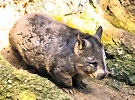 South Australian authorities have allegedly approved the slaughter of 200 ‘pest’ wombats by a Yorke Peninsula farmer, sending shock waves right across the community.
South Australian authorities have allegedly approved the slaughter of 200 ‘pest’ wombats by a Yorke Peninsula farmer, sending shock waves right across the community.
 This article reproduces a leaflet written by Jim Quirk, who was my father. The leaflet advertised a 'Nature Show' at the lower Melbourne Town Hall in 1966. The Field Naturalists Club of Victoria and the Society for Growing Australian Plants sponsored the Nature Show to help the plight and status of the wombat in Australia. I wonder if the same results could be achieved today. Have we advanced at all? Reading of the particularly
This article reproduces a leaflet written by Jim Quirk, who was my father. The leaflet advertised a 'Nature Show' at the lower Melbourne Town Hall in 1966. The Field Naturalists Club of Victoria and the Society for Growing Australian Plants sponsored the Nature Show to help the plight and status of the wombat in Australia. I wonder if the same results could be achieved today. Have we advanced at all? Reading of the particularly 



 A hairy-nosed wombat community at Portee Station where this rare and persecuted animal is being rehabilitated and protected.
A hairy-nosed wombat community at Portee Station where this rare and persecuted animal is being rehabilitated and protected.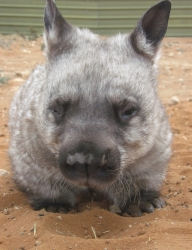
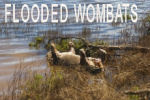 In Murraylands, South Australia, floods have trapped wombats in their warrens for weeks. Wildlife rescuers have been rescuing them and, as they rescue them, the rescued animals have been digging their friends and relatives out alongside the human rescuers.
In Murraylands, South Australia, floods have trapped wombats in their warrens for weeks. Wildlife rescuers have been rescuing them and, as they rescue them, the rescued animals have been digging their friends and relatives out alongside the human rescuers.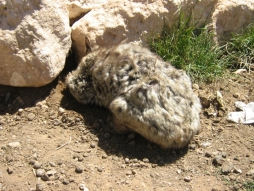
.jpg)
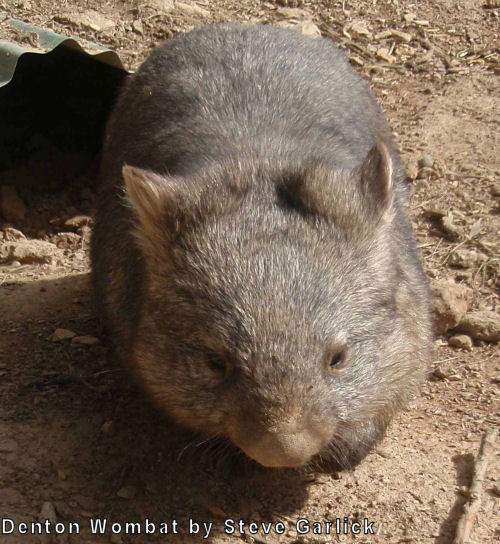

Recent comments